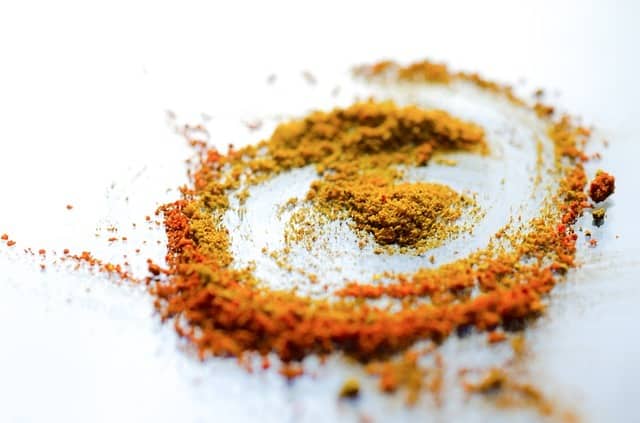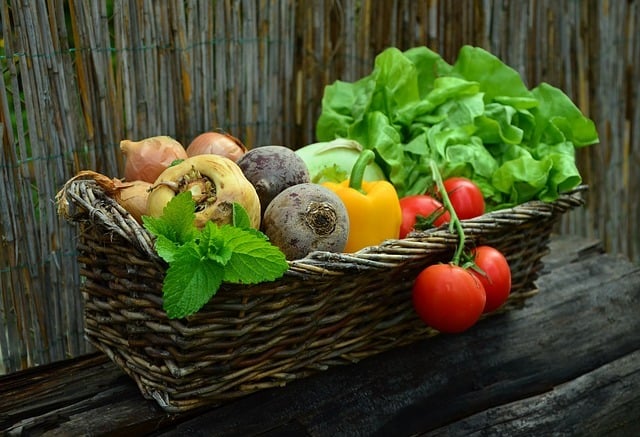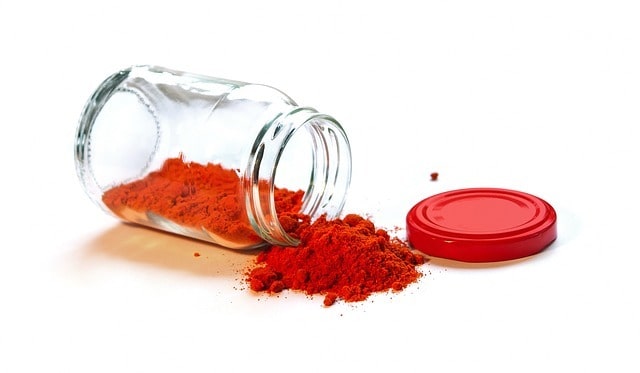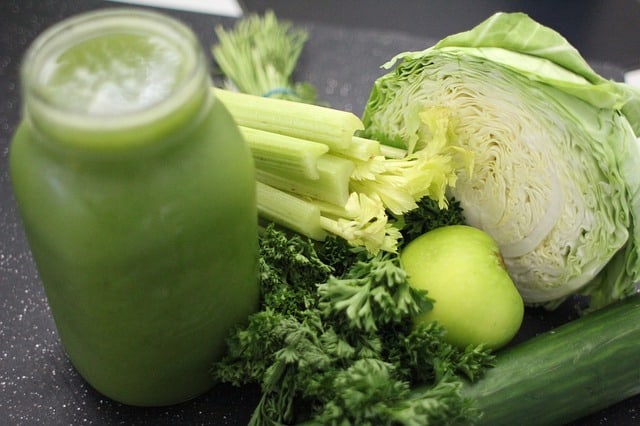Vegetable powders offer a versatile, lightweight, and easy-to-store solution to having an overabundance of vegetables for later use. While various methods of preserving vegetables have been used for thousands of years, these methods, like canning and pickling, resulted in a product that takes up a lot of space.
Vegetable powders, on the other hand, take up very little room and can be added to almost any dish for their flavor and nutritional value. Once you have learned the ins and outs of vegetable powders, you will probably want to make your own from any surplus vegetables you grow or buy.
What Are Vegetable Powders?

Vegetable powders are made from ground, dehydrated vegetables. The first step in making a vegetable powder is to dehydrate the vegetables you are turning into powder. There are many commercial food dehydrators available that can be used to do this, but you can also use an oven on low. As you are going to turn the vegetables into vegetable powder, you can even purée the vegetables first and then dehydrate the vegetable purée.
Why Use Vegetable Powders?
For most, these powders are a great way to preserve both the flavor and nutrition of vegetables for long periods and in a way that is compact to store. Vegetable powders that are made from whole vegetables have all the benefits of eating whole vegetables. There are numerous scientific studies that have found a great benefit in the consumption of vegetables that goes beyond just the vitamins and mineral count.
Another reason to use vegetable powders is to preserve the flavor of in-season vegetables. Most vegetables are available in your supermarket year-round thanks to international shipping. Unfortunately, in order to bring out-of-season vegetables to your supermarket, processors often pick and ship the produce while it is not yet completely ripe.
This results in vegetables that do not have the same taste or nutrition as in-season vegetables. Buying vegetables in season to dehydrate and then turn them into vegetable powder can be a great option to bring the flavor and nutrition of in-season vegetables to your out-of-season meals. Oftentimes, you can get a great deal on in-season vegetables, so buying extra to turn into vegetable powder is a great option.
Preparing Vegetables for Dehydration

Regardless of the method, you use to dehydrate your vegetables, wash them thoroughly beforehand to make sure that there is no contamination on them. One great way to remove 98% of potential contaminants is to soak them in a solution of one part white vinegar to three parts room temperature water. Do this after you have washed and scrubbed your vegetables, first.
Room temperature water is best as it will not shock the skins of soft-skinned vegetables. Let them soak for 10 minutes before rinsing them completely.
Preparing Hard Vegetables for Dehydration
The ideal way to dehydrate your harder vegetables, such as potatoes and other root vegetables, is to shred them first. Shredded vegetables can be turned into a powder much easier than slices or chunks, and they dehydrate much more evenly so that you don’t have any pockets of moisture inside the chunks of vegetables. Dry them until they are brittle; even crumbly.

Preparing Soft Vegetables and Fruits for Dehydration
Softer vegetables are best dehydrated after being pureed. Clean the vegetables as you normally would. Prepare the vegetable in accordance with the charts included with your food dehydrator. Mash them into a purée, removing any seeds or skins that are present. If the purée is too thin, add a natural thickener like arrowroot powder a little at a time until it comes to the required thickness.
If your purée is too thick, add a small amount of liquid and reprocess until the desired thickness is reached. Make sure to not add too much water as it could thin up the purée too much.
Spread the purée over a sheet of parchment paper that can be used in a dehydrator to dry it. Once it has become a dry vegetable leather, crumble the leather into pieces and grind it in a grinder or small food processor.

How to Dehydrate Vegetables Without a Dehydrator?
While using a food dehydrator is the easiest method of making fruit or vegetable powders, they can be expensive and bulky. Most ovens can be used to dehydrate both shredded and pureed vegetables. This method can take up to 8 hours, and you will need to check them periodically to make sure that they do not cook.
To dehydrate, simply spread your shredded vegetables or vegetable purée on a silicone baking mat or parchment paper on top of a rimmed baking sheet. Do not overcrowd the baking sheet as this can make the dehydration process uneven and result in areas with too much moisture. Place the baking sheet in the oven on its lowest setting and check at least every hour. Once they have gotten close to being dehydrated, check more often so they do not begin to cook.
As with vegetables dehydrated in a commercial food dehydrator, once the oven-dried vegetables are completely dried, crumble them and use a grinder or small blender to turn them into powder. With your vegetable powder made, it is time to turn to storage.
How to Store Vegetable Powder?

One of the biggest benefits of vegetable powders is that they can be stored for a long time for later use. There are a couple of rules to follow with storage to ensure that the vegetable powder retains its flavor and freshness. If you plan to use the powders soon, store them in an airtight mason or canning jar. Adding a silica gel packet will help to keep moisture from ruining your vegetable powder. Vegetable powders can clump, but adding a few grains of rice to the jar will help keep clumping to a minimum. Just make sure to not add the rice grains when you add the vegetable powder to foods.
For long-term storage, vacuum seal your vegetable powder in mylar bags with an oxygen absorber like a silica gel. Both heat and light are the enemies of vegetable powders, so when you are looking for long-term storage, keep them in a cool, dry, and dark place. Another option is to store shredded vegetables or dried purée in vacuum-sealed mylar bags and then pulverize them when you need to use them. This can help to retain the flavor.
How To Use Vegetable Powder for Cooking

Vegetable powders have many more uses than you might think. Obviously, they can add the flavor and nutrition of the vegetables that they are made from to your cooking. The powders of some strong-tasting vegetables, such as garlic and chili powders, bring with them the same strong flavor as their whole vegetable versions.
Onion, garlic, and chili powders are common ingredients in many cuisines, and your own powders made from these vegetables can be substituted for commercially available powders. Beyond that, they can also be used as thickeners for soups, stews, or casseroles, as a nutritional boost to your smoothies, and as a fantastic way to sneak vegetables into your kid’s foods without them knowing about it.
As Thickener
For use as thickeners, add vegetable powders by the teaspoon to soups and stews while they are still cooking. Once the vegetable powders are stirred in and cooked, add more if you need some more of the thickening effect. Pick vegetable powders that can meld with the flavors of the soup or stew that you are making. Putting shortening powder is also optional.
Casseroles often need less thickening, so a tablespoon or two should work. This is the same way you can add the vegetable powder to kids’ foods. Add a few tablespoons of vegetable powder to a box of mac and cheese, for example.

For Smoothies
A tablespoon or two of vegetable powder will give your smoothie a nutrient punch without changing the flavor that much. Use carrot powder, as it has a sweetness that will meld well with smoothies. Mixing it with butter powder also enhances the taste. Powdered greens are often the best for their nutritive qualities, and they can give your smoothy a nice green color. I would love to put some on homemade baby food.

To Add Color
Vegetable-based dyes were once one of the most common ways to dye foods as well as fabrics. Powdered turmeric root can be used as a natural food coloring to add a yellow color to your food. Powdered beetroot, on the other hand, can give your food a natural red color. In fact, red velvet cake initially got its color from beetroot juice. Tomato powder provides good coloring too.

How Do You Use the Best Vegetable Powder?
Vegetable powders are not only a great way to preserve your vegetables for later use, but they can also be made easily and stored in a much smaller space than other methods of preserving vegetables. Not only are they great for preserving your vegetables, but they can also be used in a variety of different ways. Because of this, they are a fantastic addition to your pantry.
So, finally, tell us how you use your vegetable powders and what recipes you prefer in the comment section below!
Becky is a wildlife enthusiast and pet and livestock care expert with a diploma in canine nutrition. With over a decade of experience in animal welfare, Becky lends her expertise to Simple Family Preparedness through insightful info about pets, livestock, bee keeping, and the practicalities of homesteading.


For years my granddaughter has loved to eat my homemade “pink” yogurt. We used to make it from plain homemade yogurt with red jello added. But now, I mix a little beet powder with sugar and she adds that to the plain yogurt. It’s not much, but since she eats NO vegetables, at least she is getting some.
Thanks for your helpful posts.